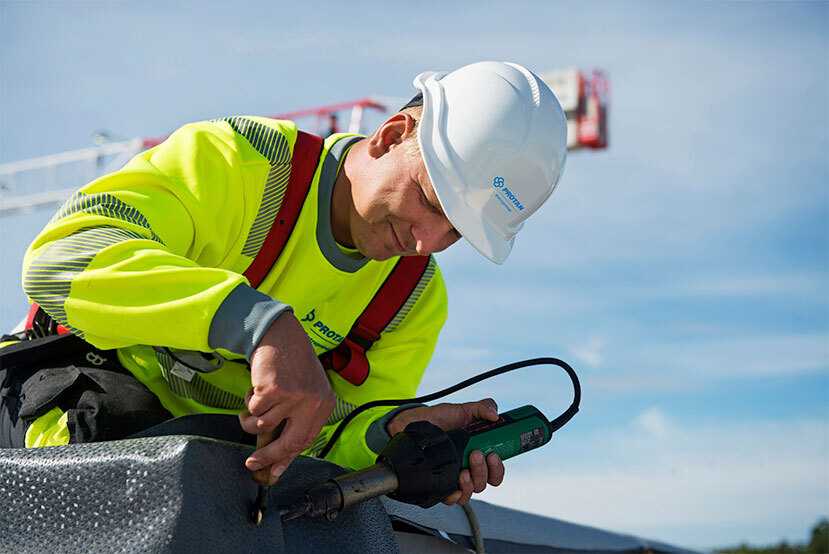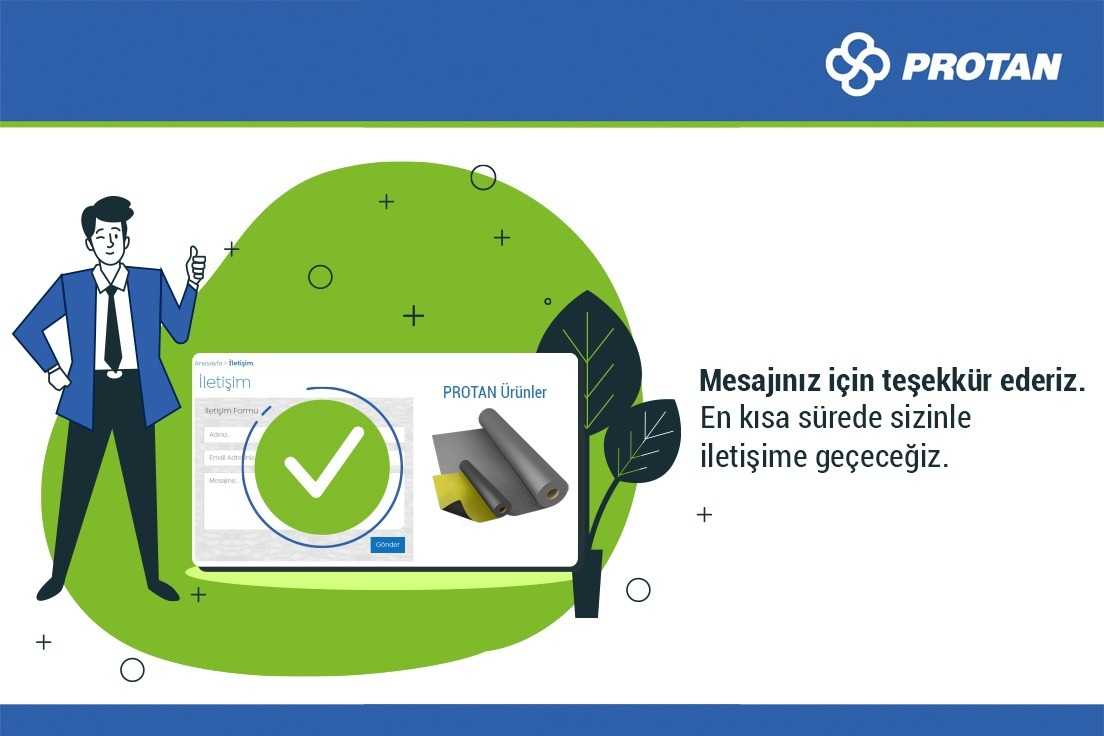TPO Membrane - Protan Turkey
Protan, a world-class international supplier, manufactures roof systems and membranes. Protan's only environmentally friendly roofing materials are developed and produced in modern factories in Turkey in accordance with the highest quality standards. The products of the Protan brand, which has been supplying roof coatings and membranes since 1972, are proud of being preferred in thousands of projects from large-scale industrial structures to tunnels, from water structures to green roof projects around the world.
What is TPO Membrane?
TPO, a thermoplastic polyolefin based blend; It is defined as a new technological product that offers a long service life due to its resistance to sunlight, atmospheric conditions, plant roots, as well as its high puncture, tear and abrasion resistance. Technological waterproofing cover TPO membranes, which are applied by stitching with hot air sources, also draw attention with their rapid growth potential in the roof and waterproofing sector.
Why Should We Prefer TPO Membrane?
It is known that the most important reason why TPO membranes are preferred is their long-term durability properties. According to the results obtained from the aging tests, TPO membranes have a high durability. TPO membranes that can be easily combined with a heat source; It stands out with its resistance to all kinds of atmospheric conditions, plant roots and sun rays. TPO membranes; It can be used free-laid on concrete and especially light metal roofs thanks to its mechanical fixing properties. They have the opportunity to apply quickly and economically thanks to their wide roll sizes. Thanks to their reinforcement materials, they attract attention with their high dimensional stability and high tear resistance. TPO membranes also play an important role in reducing the energy consumption of structures due to their high reflectivity properties. In addition, it is often preferred because it is a recyclable nature-friendly material.
What are the Advantages of TPO Membrane?
TPO membranes, compared to other membranes; Besides being an environmentally friendly product since it does not contain any toxic or harmful substances, it also draws attention with its advantageous features such as high energy savings due to its heat reflective feature. TPO membranes have a very low impact on the environment due to their recyclable properties. It is known that one of the most important features of TPO membranes is that they do not use plasticizers in order to gain flexibility like PVC membranes. Thanks to its polyolefin structure, TPO membranes provide the advantages of very high durability and high elasticity throughout their lifetime.
What Does TPO Membrane Do?
TPO membranes are designed to provide waterproofing on all roofs that are exposed to harsh weather conditions and sunlight. TPO membranes that can be applied quickly and easily; It can be applied directly on EPS thermal insulation boards. TPO membrane is produced using polymer production technology and provides long-term flexibility as it does not contain plasticizers. TPO membrane, which is a single layer reflective roofing material, is produced in three colors as grey, white and tan. By choosing the color white, it may be possible to obtain an energy-efficient cool roof and to reduce the energy consumption of the building.
Where is TPO Membrane Used?
TPO membranes; It can be used on light metal roofs, roofs with and without thermal insulation, dome-shaped or different shapes of concrete and steel roofs. Except this; It can be seen that TPO membranes are used extensively in the waterproofing of gardens, parking lots, terrace roofs and metal streams. TPO membranes are used on roofs because of their properties, flat roofs are often the most demanding application area of structures. However, in fact, TPO membranes have various application areas. TPO membranes; It can be used in drinking water tanks, underground structures such as basements or tunnels, under ballast or green/garden roofs, in a variety of roof application techniques such as loosely laid system and mechanically fixed system.
How is TPO Membrane Used?
In TPO membrane applications; mechanical fastening method, linear bonding method and free-laying (with ballast) method can be used. While deciding which method to use during TPO membrane applications; Criteria such as the slope of the roof on which the application will be made, its architectural design, the wind load it will be exposed to, whether an old roof has been renovated and whether there will be a green terrace roof application are taken into consideration. Regardless of these application methods, the joints in TPO membrane applications are always joined using the hot air welding method and thus their sealing is ensured. In joining processes with hot air welding, it is possible to obtain a continuous and homogeneous structure as well as providing absolute impermeability. After joining processes with hot air welding, a more durable layer is formed from the synthetic cover.
In traditional bonding or torch methods, the joints are the weak points of the sheet. Joints become strong points in joining processes with the use of high-tech hot air welding robots. For this reason, it is not possible to encounter problems such as separation, lifting or peeling over time.
TPO membranes have traditionally been used; It is applied using the mechanical fixation method. Within the scope of this method, the synthetic cover is fixed to the roof construction by using mechanical methods. Fixing to the ground is done using special screws, and there is often a thermal insulation layer between the roof construction and the cover. Such a synthetic cover provides permanent protection of the thermal insulation layer and the roof construction from the harmful effects of water. The low unit load per square meter in the mechanical fixation method is considered one of the advantages of this method. In this way, the static calculations of the whole building are reduced and the initial investment cost is significantly reduced. In the mechanical fixing method, firstly, holes are drilled at certain intervals, the thermal insulation layer is passed, and a solid roof construction is reached. The fasteners used ensure that the effect of point stapling is reduced by spreading the load affecting the synthetic cover to a wide point under wind load.
The free-lay method is considered one of the fast and reliable methods used in the application of synthetic covers. As ballast in practice; screed concrete, gravel or green roof detail layers can be used. Other advantages of this method are that no screws are used and the carrier construction is not drilled.
In the linear bonding method; A special type of TPO membrane is used, with a felt laminated on the underside. In this method, which saves both labor and time, the bonding process is applied in strips using the linear method. Hot air source is used in the joint and overlapping places. The bonding process is carried out for the purpose of fixing the synthetic cover to the ground, and an excellent adhesion to the carrier ground layer is achieved.


